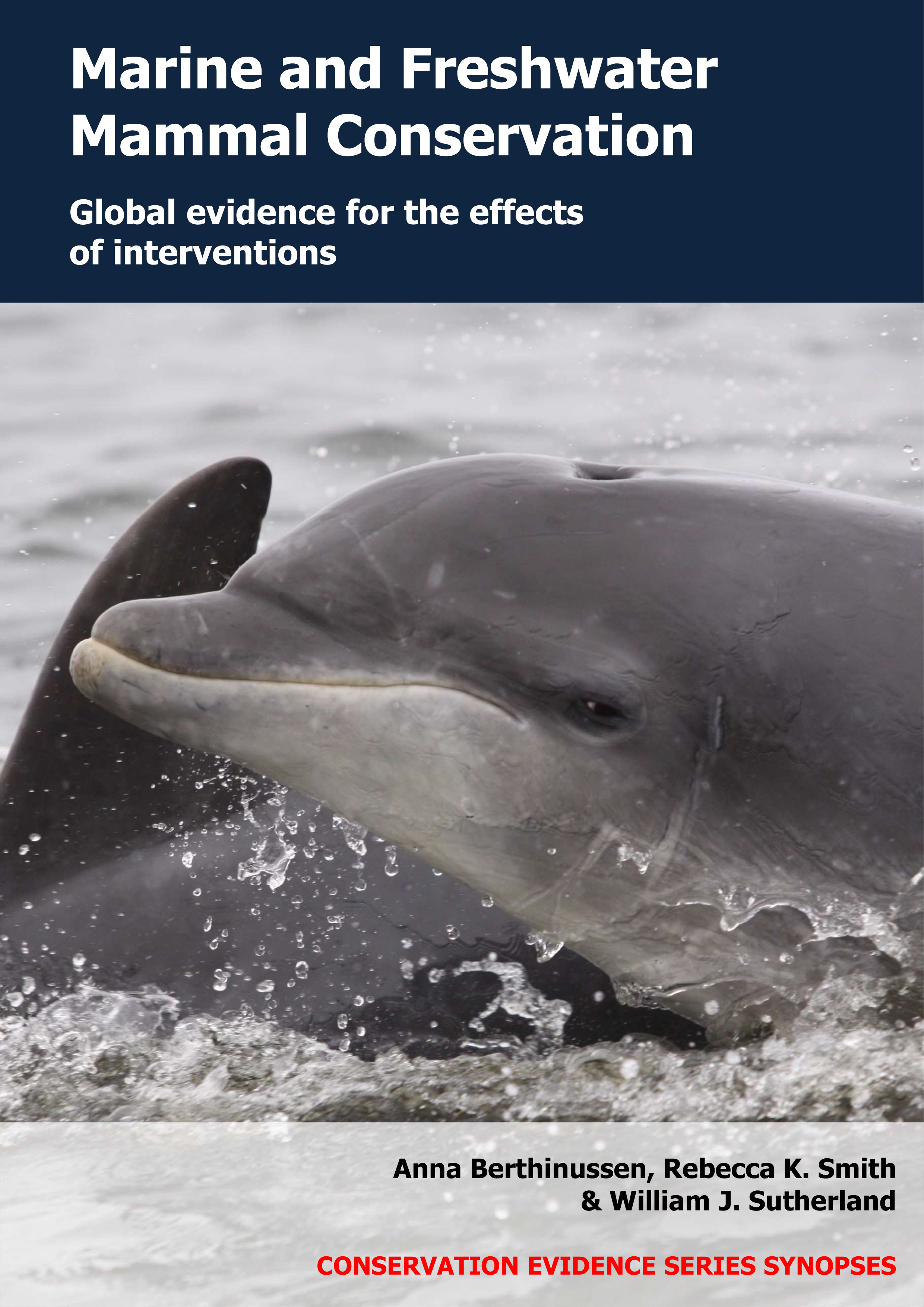Restore habitat for marine and freshwater mammals
-
Overall effectiveness category Unknown effectiveness (limited evidence)
-
Number of studies: 1
View assessment score
Hide assessment score
How is the evidence assessed?
-
Effectiveness
55% -
Certainty
30% -
Harms
0%
Study locations
Supporting evidence from individual studies
A before-and-after study in 2006–2012 of a stony reef in the Kattegat sea, Denmark (Mikkelsen et al. 2013) found that restoring the reef, along with prohibiting fishing, resulted in harbour porpoise Phocoena phocoena echolocation clicks being recorded more often and for longer periods than before restoration and protection. The average number of minutes with porpoise recordings and the average duration of porpoise encounters were higher at the reef in each of four years after the reef was restored and fishing prohibited (13–15 minutes/day; 4–5 minutes) than during two years before (6–10 minutes/day; 3 minutes). Porpoise activity at an intact reef 10 km away decreased over the same period (‘before’: 11–15 minutes/day; ‘after’: 3–7 minutes/day). In June–September 2008, a total of 100,000 t of norite boulders were dumped over 19 days to restore a 45,000 m2 cavernous stony reef. Fishing was prohibited around the restored reef in 2009–2012. Porpoise activity was recorded with acoustic data loggers (two at the restored reef; two at an intact reef) for 33–75 days in June–August in each of two years before restoration and protection (2006 and 2007) and each of four years after (2009–2012).
Study and other actions tested
Where has this evidence come from?
List of journals searched by synopsis
All the journals searched for all synopses
This Action forms part of the Action Synopsis:
Marine and Freshwater Mammal Conservation
Marine and Freshwater Mammal Conservation - Published 2021
Marine and Freshwater Mammal Synopsis





)_2023.JPG)














